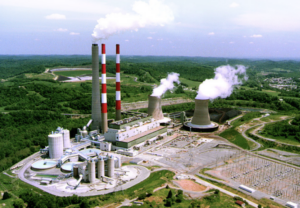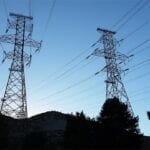The coronavirus pandemic is altering the power landscape, with utilities and other power generators forced to adjust for load disruptions. Power consumption is changing as commercial and industrial electricity users close their businesses, and load is shifting to the residential sector with workers now settled in home offices, and students practicing remote and distance learning.
Enverus, an energy data and analytics company, on April 7 released its latest report about demand destruction, the decline in electricity consumption that is occurring nationwide due to COVID-19. Enverus twice daily forecasts power consumption to help utilities balance supply and demand of electricity for their consumers. The report, “What Machine Learning Helps Us Know About Power Demand Destruction During COVID-19,” was written by Rob Allerman, senior director of Power Analytics for Enverus.
Laura Blewitt, a marketing manager with Enverus Trading & Risk in Texas, said Enverus was faced with never-before-seen scenarios as a result of the nationwide COVID-19 shutdowns. “Enverus machine learning-based forecasting tools have never learned the demand dynamics at play—nor had the power analytics team,” Blewitt told POWER.
Blewitt noted that how Enverus’ models normally work no longer applies. Traditionally, the company’s machine-learning models look at actual temperature and power demand data from previous days and weeks, learning as it goes. “The models were built to respond to load growth or anything that may be happening in the market,” said Blewitt.
To measure the load impacts from COVID-19, Blewitt said Enverus launched a new model that knows what the temperatures were for the load from February 2019 to February 2020. But it doesn’t know anything that’s been happening over the past month.
This report shows first results from the new forecast model and analysis of demand destruction based on same/similar temperatures and load pre and post, using data back to 2019 and adjusting to load growth when appropriate.
A summary of the key findings:
- Load peaks are shifting in the mornings, particularly in northern regions of the U.S. Loads that previously peaked around 7 a.m. local time are now closer to 8 a.m. as Americans are adjusting morning routines.
- In NYISO, the emerging epicenter of the pandemic, demand destruction increased from 7-10% (1,300-2000 MW) to 10-15% (1,600-2,400 MW). Localized pockets around New York City are likely much higher.
- ERCOT load demand destruction is softer, increasing to just 3-5% (1,000-2,000 MW).
- Demand destruction has been accelerating in PJM. When comparing similar temperature hours to pre-COVID-19 load, demand destruction has increased from 4-6% (4,000-6,000 MW) to 8-12% (6,000-10,000 MW).
Allerman notes that “While it is very early in our assessment of the power load demand destruction impacting U.S. ISO markets, it’s clear that COVID-19 has had material impacts on electricity consumption.”
—Darrell Proctor is associate editor for POWER (@DarrellProctor1, @POWERmagazine).









